Margaret Armstrong: The Illustrator
Many readers may now be familiar with Margaret Armstrong, the binding designer whose work is currently on display in the Library’s recently re-opened second-floor gallery. For those of you who have not had the opportunity to experience the exhibit The Book Beautiful: Margaret Armstrong & Her Bindings in person, you can visit our virtual exhibit to see some truly excellent examples of turn-of-the-century art nouveau- and stained-glass inspired binding designs.
While I have written about Armstrong’s bindings on this blog in the past, and in the spring issue of Books & People, I have not had the opportunity to discuss Armstong’s abilities as an illustrator. Perhaps best known for her binding designs, Armstrong illustrated several books with the same attention to detail and stylistic approaches she brought to her bindings. Just as she would bring themes from the pages onto the cover of a book, Armstrong would ensure her illustrations created a cohesive unit with the text. Her illustrations were intended to enhance a reader’s experience, and her originality and skill aided her in finding ways to design these illustrations to engage with text type and type colors predetermined by publishers.
Armstrong created binding designs and decorations for a series of three books of poems written by Paul Laurence Dunbar and published by Dodd, Mead & Co. between 1901 and 1904. These books were illustrated with photographs by the Hampton Institute Camera Club, and the main challenge Armstrong faced was to incorporate decorations onto the pages that complimented both the type color and tonal range of the photographs. For each book, Armstrong incorporated her typical stylistic floral designs based on real plants. Her color palette and the method in which she integrated her decorations with the photographs and text are unique in each publication.
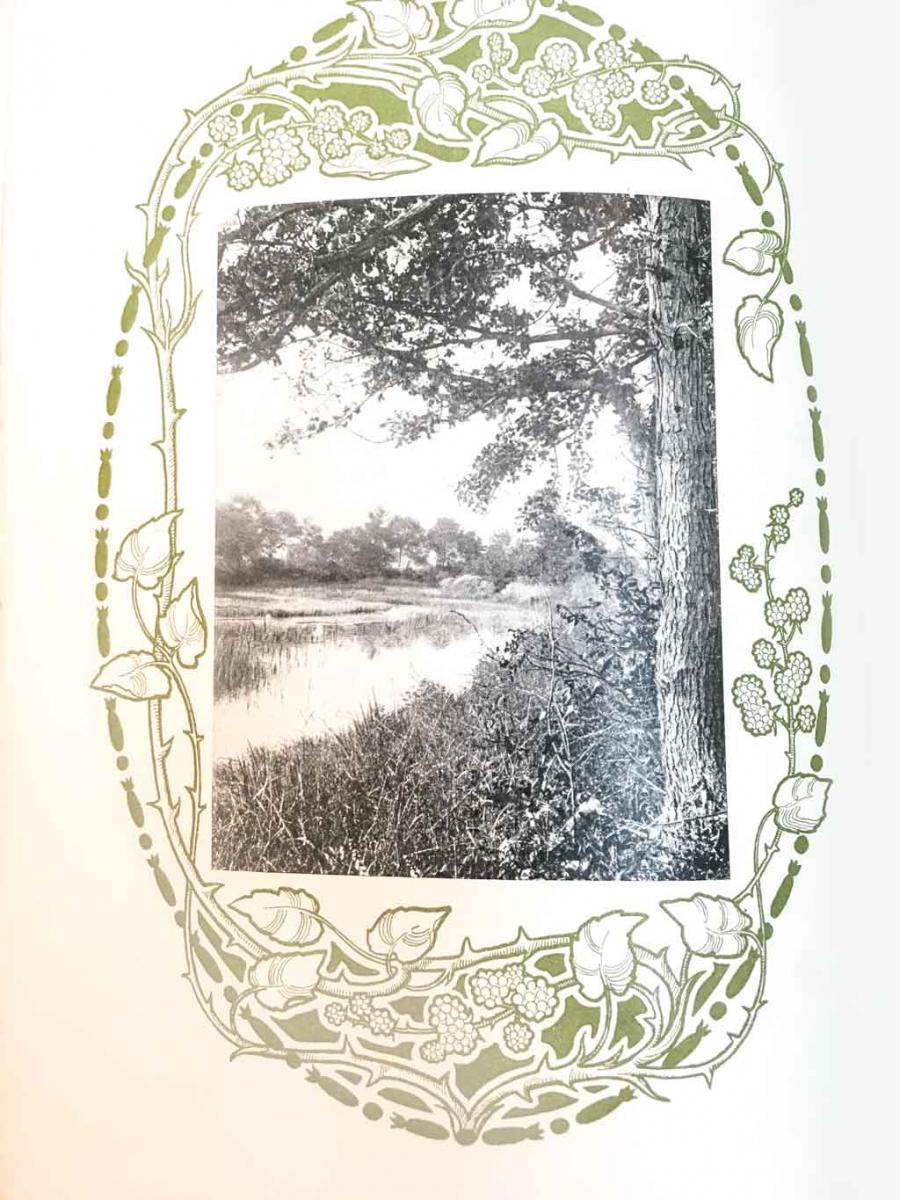
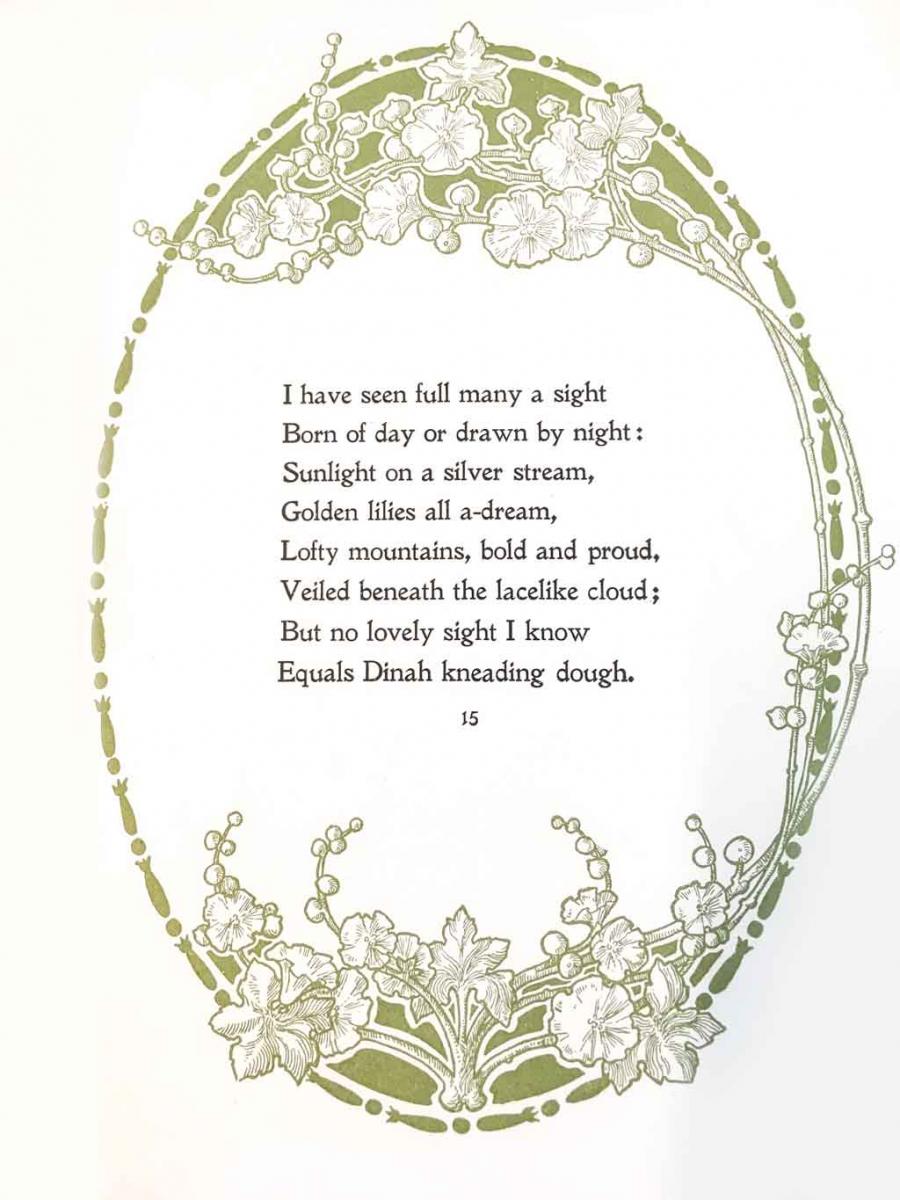
Pages from Paul Laurence Dunbar’s Candle-Lightin’ Time.
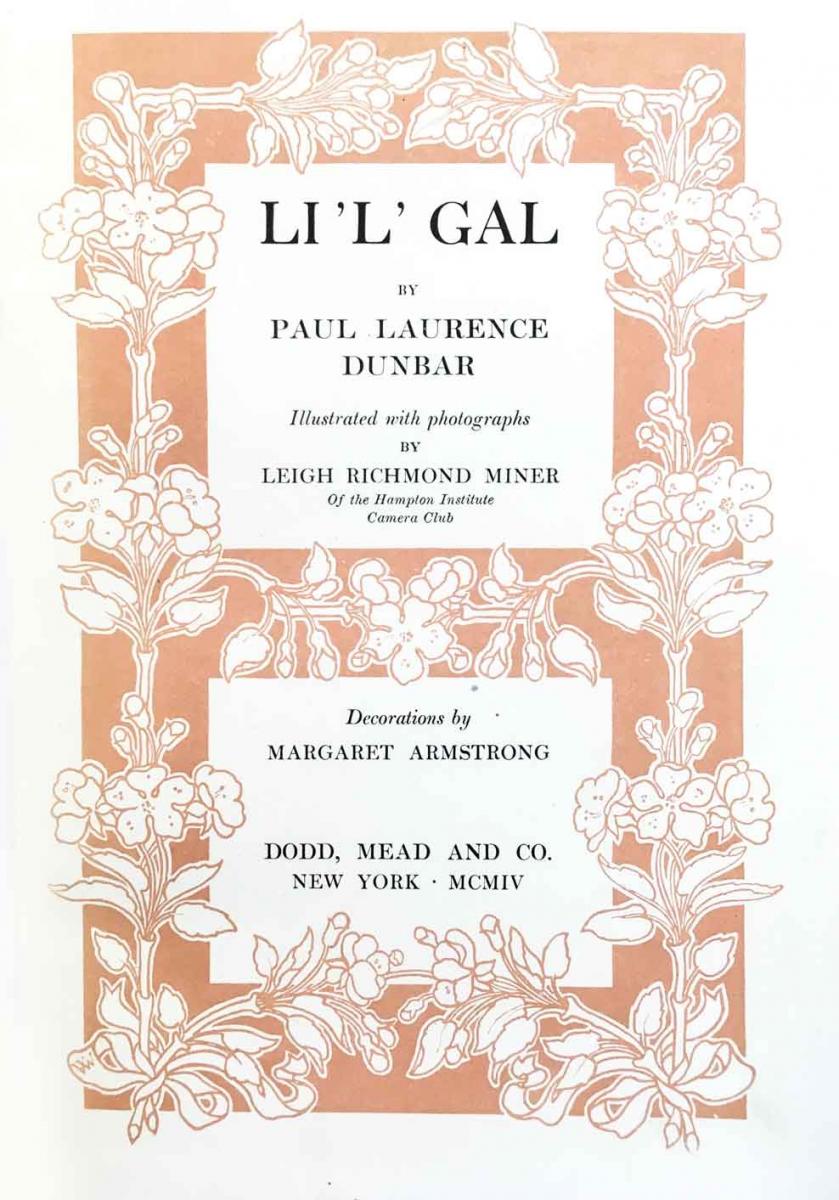
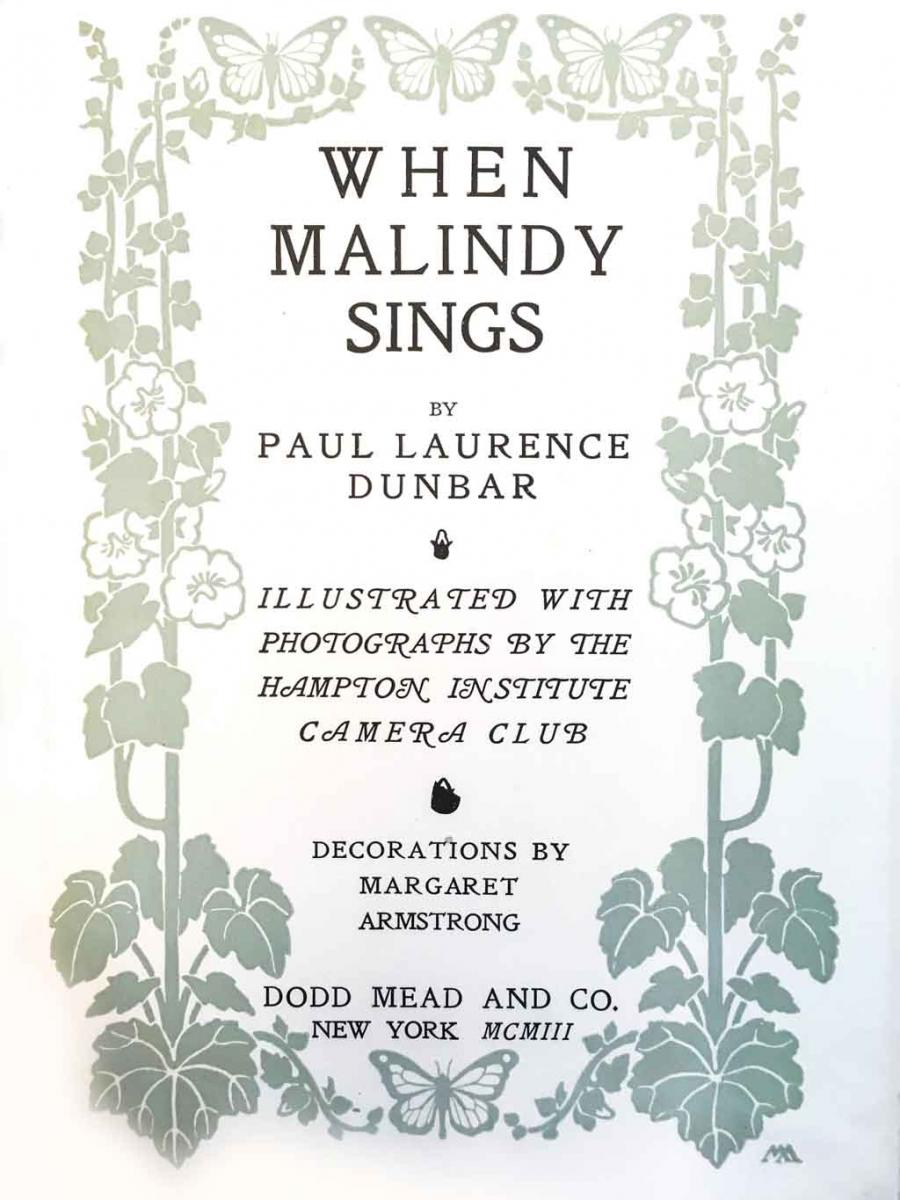
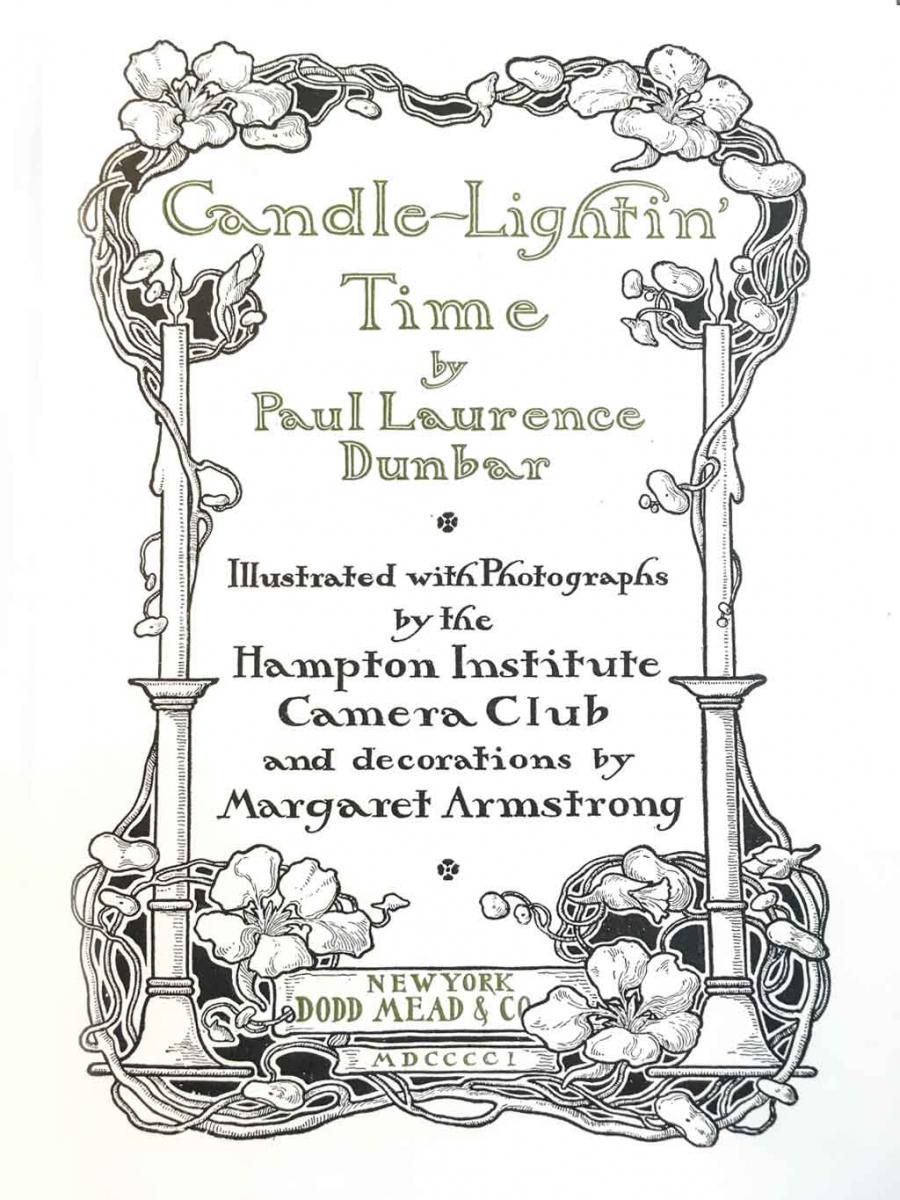
Title pages showcasing Armstrong’s different designs for the series of Paul Laurence Dunbar books of poetry published by Dodd, Mead and Co.
Among the number of books Armstrong illustrated, I would like to highlight her work on the 1902 G.P. Putnam’s and Sons edition of Elizabeth Barrett Browning’s Sonnets from the Portuguese. This acclaimed collection of 44 love sonnets written by Browning are beautifully illustrated with Armstrong’s skill and care. She created 38 illustrations for this edition, and designed the title page and binding. Her sister, Helen, an accomplished artist in her own right known for illustrations and stained-glass design, drew the frontispiece.
The illustrations for Sonnets from the Portuguese are some of the more breathtaking of Armstrong’s career. Armstrong could incorporate more details into her illustrated florals than into her bindings; in Sonnets we find more realistic vines and flowering plants than typically seen in her bindings. Armstrong’s romanticized, yet recognizable, flowers show organic movement. They curve across the page, giving readers a sense of living plants. The flowers are delicately colored in soft tones, and her chosen palette matches the brown of the text type. Armstrong also incorporated quotes into the illustrations, complimenting the sonnets on the corresponding pages.
Below, I’ve included some of Armstrong’s illustrations from Sonnets from the Portuguese. I’ve also created a Flickr slideshow to highlight several more illustrations not included on this page. Please click here to have a look at other stunning illustrations.
The Peluso Family Exhibition Gallery has re-opened! The Library’s copy of Sonnets from the Portuguese, gifted by Armstrong scholar Lowell Thing, is currently on display in the second floor exhibit (and online), where you can read more about Armstrong’s binding for this book.
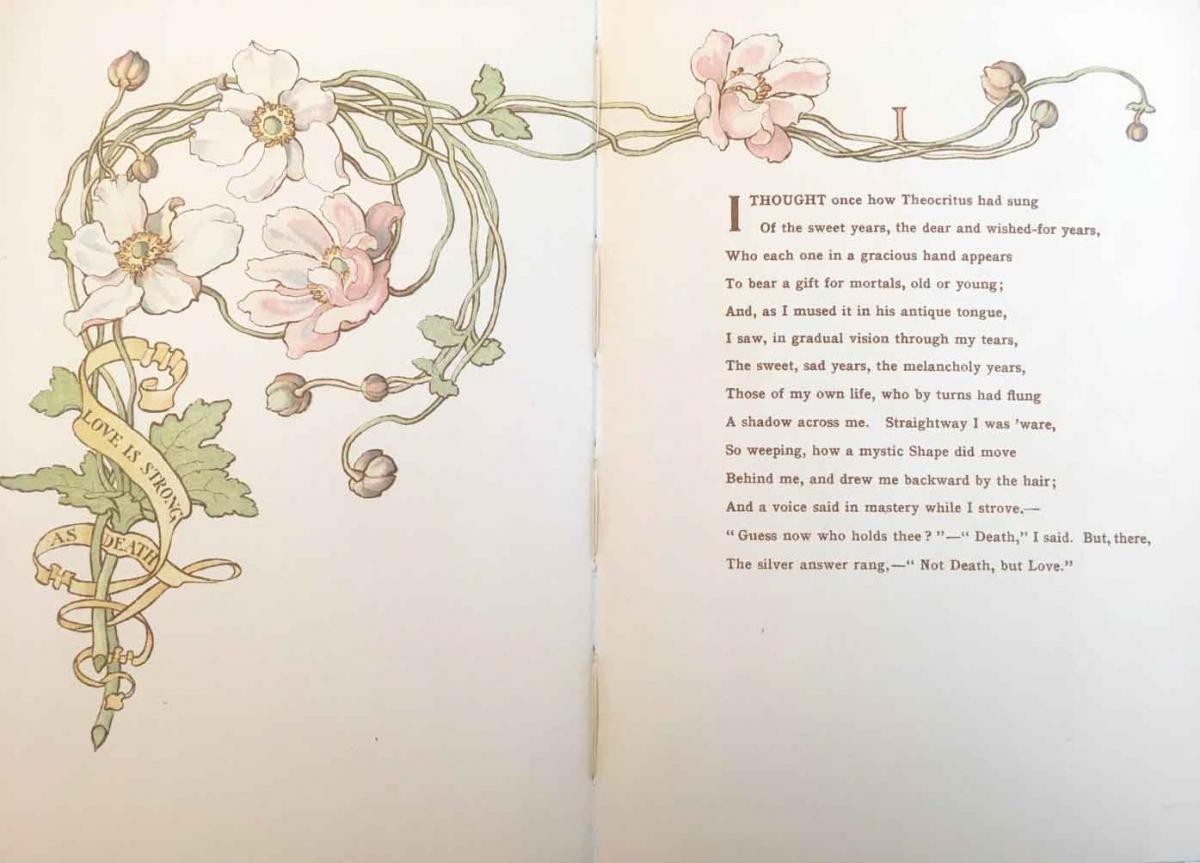
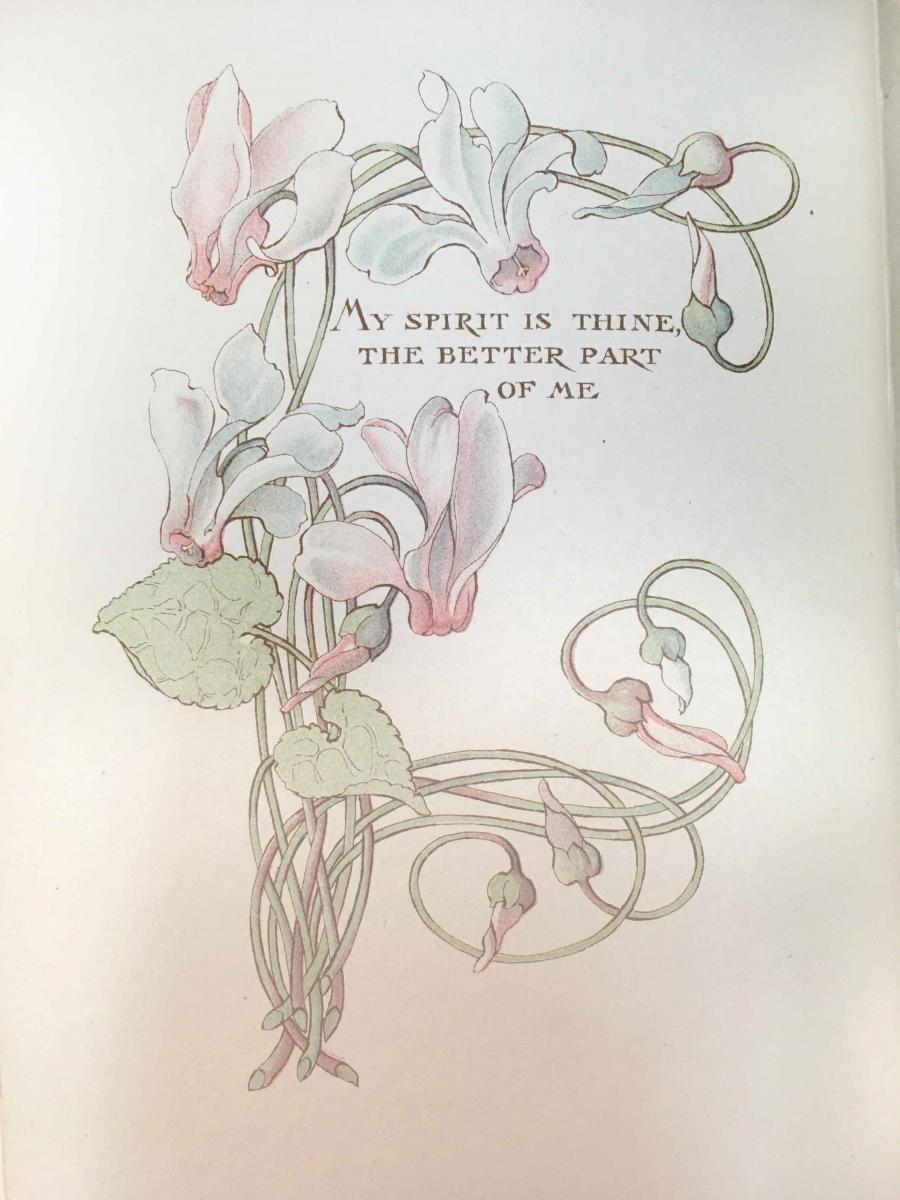
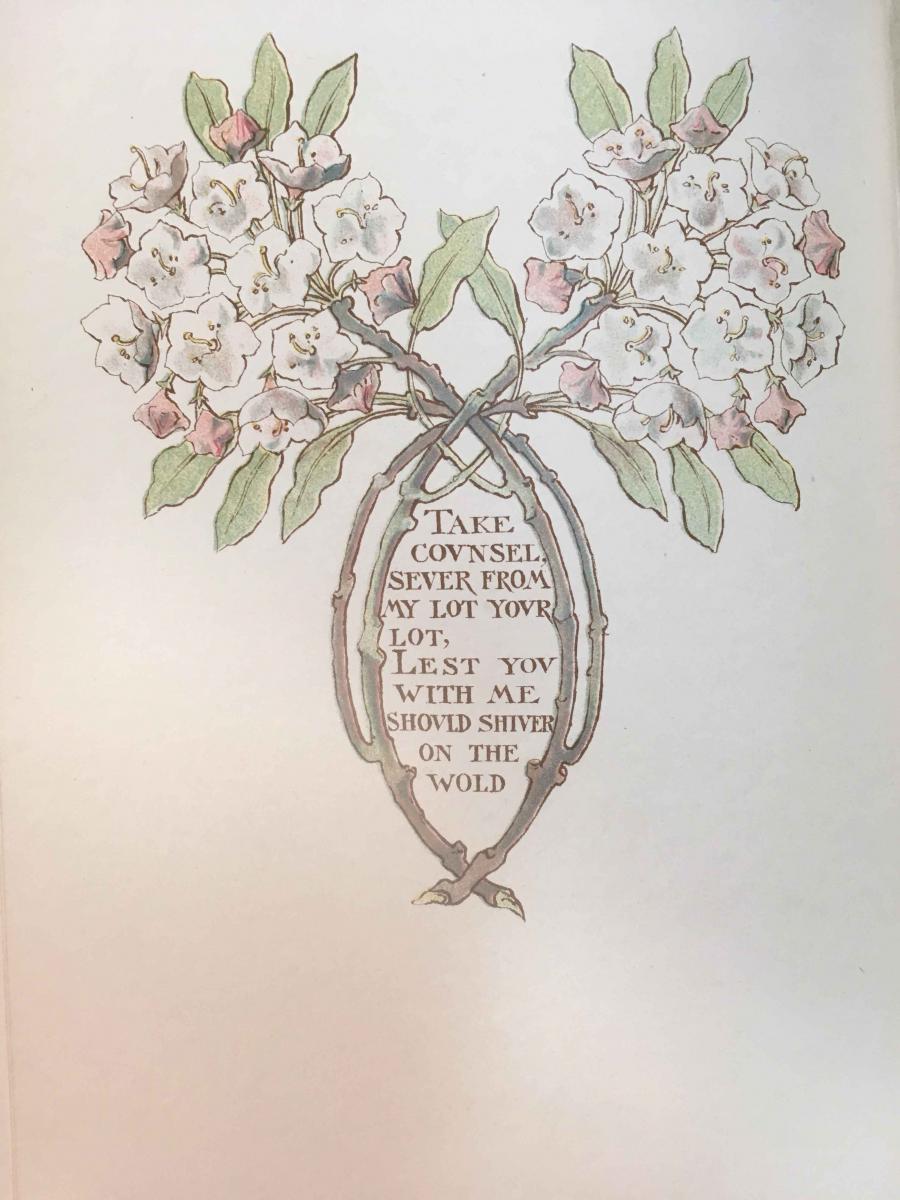
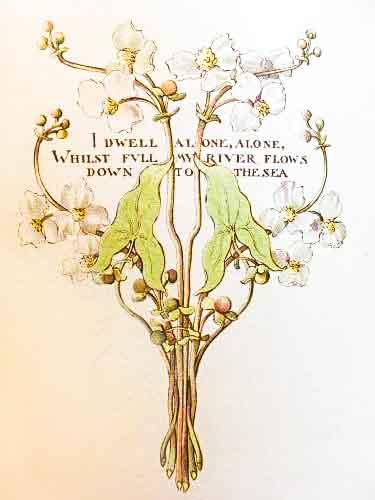

Disqus Comments